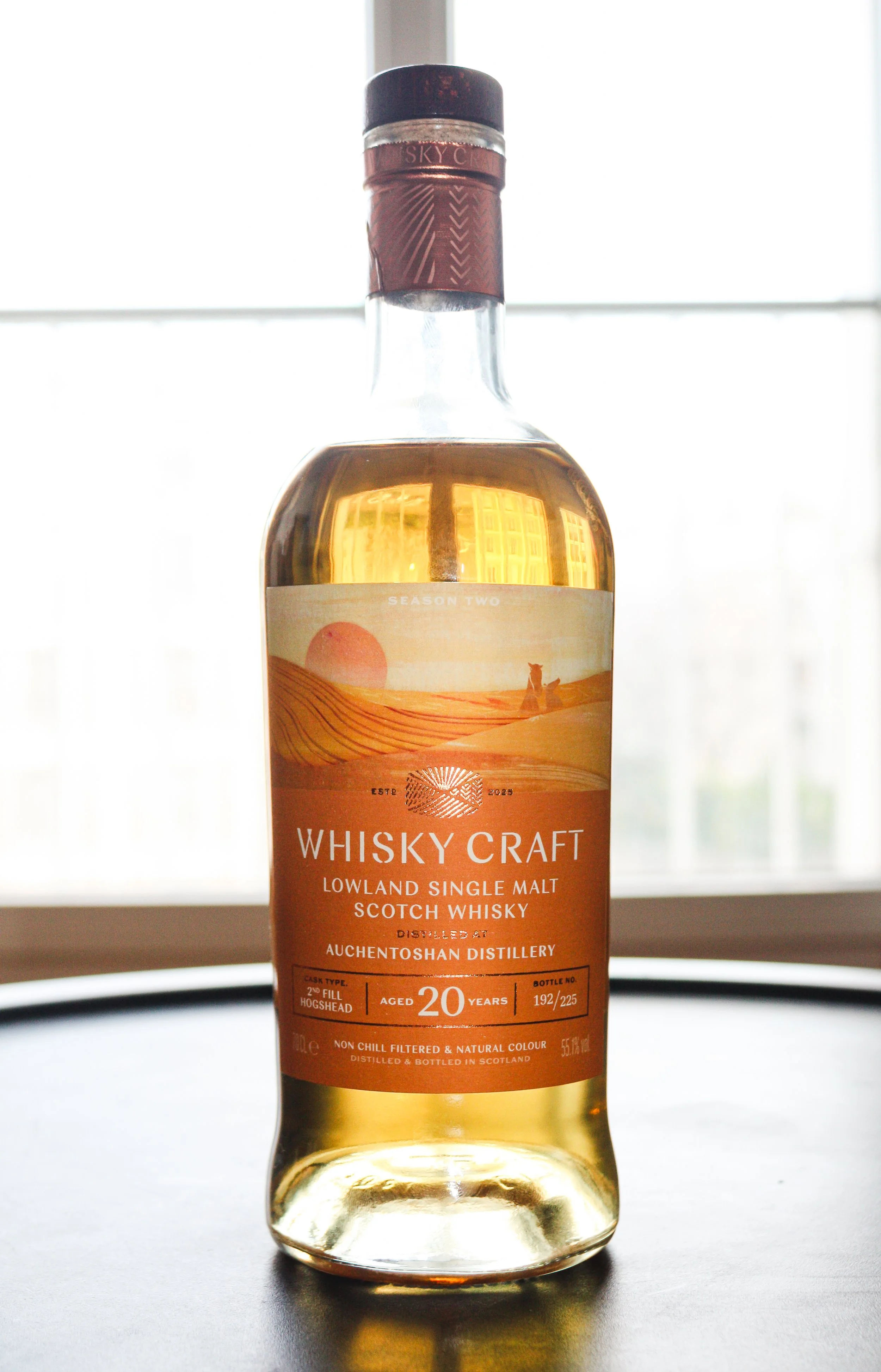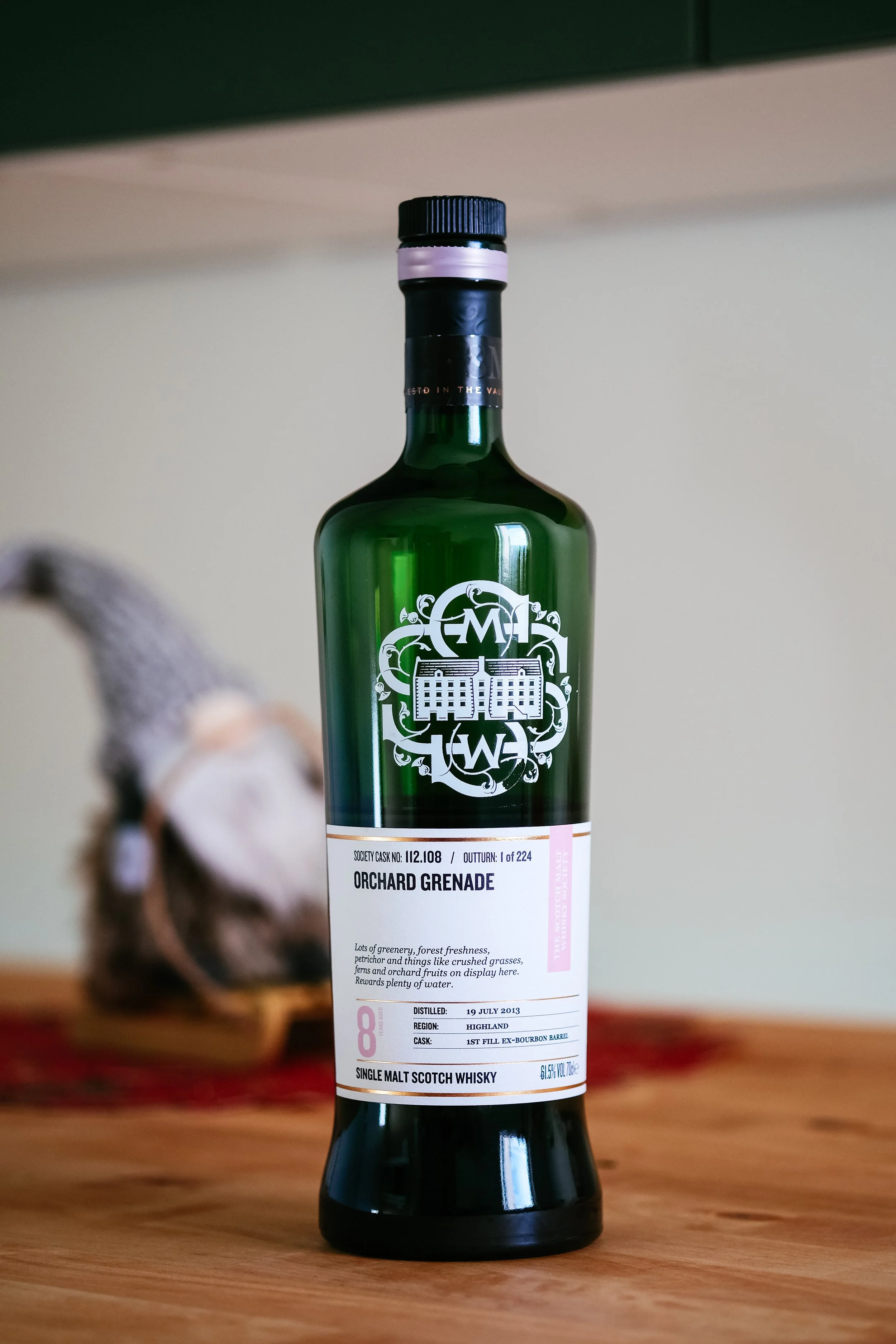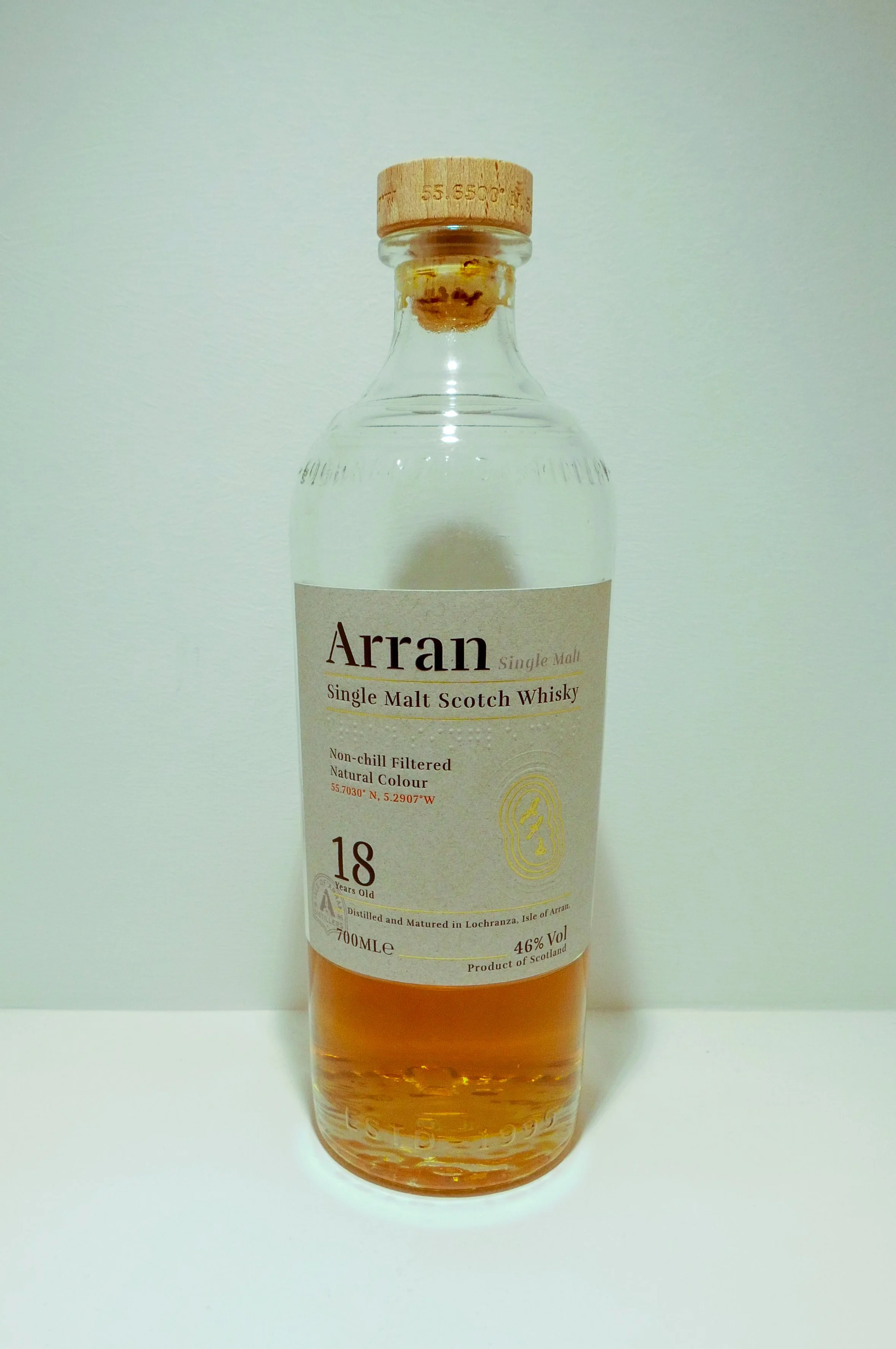Dalwhinnie 15yo
Official Bottling | 43% ABV
Score: 5/10
Average.
TL;DR
Pleasant enough, but for a 15yo malt it lacks complexity
Scarce, valuable, yet cheap?
A few years ago, I was having a conversation with a friend of mine who’s a music promoter, and he said something to me that I’ve never forgotten. It’s something that I think applies to many things in life, including whisky.
I’m paraphrasing here, but what he said was this: “What most musicians don’t understand is that the majority of people who buy and consume music, do it on a casual basis. Your average Joe buys two CDs a year from Tesco, and one of them is a Coldplay CD. If you can get those people to buy your music, that’s where the big money is.”
Although I’m paraphrasing, the last bit of that quote – about the average Joe buying two CDs a year from Tesco – is verbatim. The reason that it stuck with me is because it seemed to perfectly sum up the reality of the music industry; namely, that success – or at least, financial success – often comes from being able to appeal to the broadest possible swath of people.
In successfully doing so, you often have to water down what you do in order to make it appeal to as diverse a range of palates as possible. Of course, this is a generalisation, and there are exceptions to the rule, but often, this involves playing to the middle of the road.
Obviously, the reason I bring this up is because I think that the same can be said about whisky. When you’re ensconced in the whisky rabbit hole, as many of us are, it’s easy to forget that to most people, whisky is just another consumable. Admittedly, it’s an expensive consumable, but the reality of it is that the majority of single malt drinkers probably buy a handful of bottles a year, and for the most part, they probably buy their whisky from the supermarket. They open it, they drink it, they enjoy it and then, when another birthday, or anniversary rolls around, they buy another bottle. It’s a drink. An expensive drink. But that’s all it is.
I use that word ‘expensive’ cautiously, because ‘expensive’ can mean different things to different people. As I write this, I’m sitting across the table from a glass cabinet that contains roughly a third of my whisky collection. The bottles in there range from £20 supermarket staples – Redbreast 12, Shackleton’s Blended Malt etc – right the way up to a handful of discontinued vintage Balblairs from the early 90s, and even a Springbank Local Barley that I’m waiting for the right moment to open (I know, I know, tomorrow never comes and all that, but I sometimes have a hard time opening those really special bottles).
My point is that if I had to put an average figure on it, I’d say that my comfort zone, when it comes to buying a bottle of whisky, is somewhere in the £60 to £80 range. This usually either gets me into the 14 to 16 year old ballpark, or allows me to pick up bottles with higher ABVs. Go above £80 and I start to get that feeling that I’m being a little self-indulgent, which is why I rarely buy any 18 year old whisky nowadays. Below £60 and I’m often faced with entry level expressions that I’ve already tasted, or which are bottled below 46%.
Of course, everybody’s financial circumstances are different, and there are probably people reading this who are quite happy to drop £100 plus on a bottle, just as there are people reading who are still at the stage where all whisky seems expensive.
I remember when I first started getting a taste for single malts, I set myself a £30 ceiling. Back then, you could pick up the likes of Caol Ila 12 and Bowmore 12 (both of which were early perma-shelf bottles) – for around the £25 to £30 mark. Occasionally, I’d come across a bottle of Ardbeg 10 in Sainsbury’s that had been reduced from the lofty heights of £35, to £30, at which point, I’d snap it up. In those early days, it felt as if there was a whole world of whisky to explore just by perusing the supermarket aisle. The idea that I’d end up on the likes of Tyndrum Whisky or Master of Malt, spending £100 plus so that I could get free delivery, was a whole world away.
Inevitably, that’s what’s happened, though. There’s a conscious choice that most of us make, when we realise that we’re really serious about getting to know whisky, and that choice involves having to reconcile ourselves with the fact that we’ve chosen a bloody expensive hobby. A year or two after tasting my first gamechanger whisky – a bottle of Sainsbury’s Taste the Difference Islay that I paid about £17 for – I was hankering after older whisky, cask strength whisky and limited edition bottlings. In order for my palate to develop, I felt as if I needed to broaden my whisky horizon, something which also involved broadening my whisky budget.
The first ‘old’ bottle of whisky that I bought was Glenlivet 18. I paid £60 for it. The reason I can still remember how much I paid is because, at the time, £60 seemed like an awful lot of money for a bottle of whisky. With the exception of Glenfiddich, it was the only 18 year old whisky that I could afford, though. It also came Ralfy recommended, so I took the plunge.
The reason that I’m saying all of this is because, as enthusiasts, it’s easy to forget that that entry level tier of the single malt market is still relevant. I was reminded of this recently, when in the People’s Choice Category for Best Blended Malt in the 2024 OSWAs, Monkey Shoulder came in 6th. It’s been about 15 years since I’ve owned a bottle of Monkey Shoulder, and my initial response to seeing it shortlisted for the People’s Choice award was: ‘Monkey Shoulder? Are you serious?’
I checked myself, though. Because that was the voice of the snob in me. There’s nothing wrong with Monkey Shoulder. Judge it on its own merits and it’s a perfectly good blended malt at a very reasonable price. Like I said, it’s been a long time since I’ve owned a bottle, but I’d imagine that it’s a good whisky to start the evening with, a good whisky to pour for guests who aren’t really into whisky, and a good whisky for people who are just dipping their toes into the malt waters.
Is it going to stack up against other blended malts from the likes of, say, Compass Box or the Thompson Bros? Probably not. But as I write this, you can pick up a bottle of Monkey Shoulder from Tyndrum Whisky for £22.99. That’s less than half the price of a bottle of Orchard House. A bottle of Bells retails for around the £18 to £20 mark, so you could argue that it’s fairer to compare it to that. Judge it against a bottle of Bells and it’s suddenly a stellar whisky for the price, albeit that Bells is a blend rather than a blended malt. In fact, if your regular staple was Bells, and somebody convinced you to spend an extra fiver to get a bottle of Monkey Shoulder, I’m pretty sure that that bottle of Monkey Shoulder would be a gamechanger. There would be more than a fiver’s worth of extra quality there. Significantly more.
The point I’m making is that, as enthusiasts, it’s good to poke our heads out from our rabbit holes once in a while, and look at the whisky landscape more broadly. Of the hundred or so bottles that I own, I’d say that well over 90% of them are bottled at 46% or above. The handful of bottles that I have at less than 46% are almost exclusively bottles that I’ve been gifted for Christmas or birthdays. With the exception of Ancnoc 12 – which is a masterclass in subtlety, and is still a whisky that I regularly revisit today - I don’t buy any whisky that’s bottled below 46%. It simply doesn’t appeal to me.
The whisky that I’m going to review here is a bottle that I was gifted for my birthday a couple of months ago. It’s bottled at 43%, it’s from a distillery that I have little to no experience with, and it can be had for under £50. It’s a bottle that, despite being something I probably wouldn’t buy, I was very happy to receive. Why? Well, firstly, because it was a gift, and being gifted whisky is never a bad thing, and secondly, because it’s good to try expressions that you wouldn’t otherwise get to taste.
What I will say is that I’m enjoying it a lot. For reasons that I’ll get to later, though, it falls short when judged against other similarly aged expressions, and as such, was a difficult bottle to score.
Review
Dalwhinnie 15yo, Official Bottling, 43% ABV
£45-50 and widely available
Go to the search bar on the Dramface website, type the word Dalwhinnie in, and you’ll get…well, very little. Not a single review of a Dalwhinnie expression existed on this website before today. I find that quite shocking, when you consider that there are over a thousand reviews here, and that Dalwhinnie is a brand that’s available in virtually every supermarket.
Then again, consider their entry level expression ‘Winter’s Gold’; a whisky that, according to the label, tastes good having been chilled in the freezer. Whether this is a marketing gimmick, or whether it’s just so rough that it shouldn’t be poured at room temperature, I’m not sure. Needless to say, I’ve never been tempted to buy a bottle.
I guess that the point I’m making is that Dalwhinnie’s core range, like a lot of core ranges, is one that just isn’t marketed at people like me. I’ve yet to come across an indy bottle, and there’s nothing in their core range that’s naturally presented, so for these reasons, I’ve always overlooked it. As such, this is my first experience with the brand.
Score: 5/10
Good stuff.
TL;DR
Pleasant enough, but for a 15yo malt it lacks complexity
Nose
Fruity and floral. I get heather honey, red apple and a touch of spearmint. There’s also some sweet honeysuckle and a touch of citrus. Very gentle, which is fitting, considering that Dalwhinnie markets itself as ‘the gentle spirit.’ There’s no complexity here, but it’s pleasant enough.
Palate
There’s a lovely tropical note here – apples, pineapple and maybe a touch of banana. It’s very subtle though, and I can’t help wishing that there was a little bit more of it. I also get some salt and some highland toffee.
As you swallow, a very dry note develops and sucks a lot of the moisture from your tongue. It’s not unpleasant and acts as a nice contrast to some of the sweeter notes here, but it is pretty bitter.
The Dregs
My main complaint here is that it’s all over a bit quickly. There are some fairly generic whisky flavours – vanilla, honey, toffee, the fruit that I mentioned – then there’s some bitterness on the way down and then, that’s it.
The finish is medium but other than those dry tannins there’s really not much going on beyond the initial arrival and the development. It’s subtle, gentle and very drinkable, but it lacks a bit of the complexity I was hoping for in a whisky of this age, as well as the mouthfeel and general sense of grip that inevitably comes from chill-filtering and watering a whisky down to 43%.
Here’s the thing with this whisky; I’m really enjoying it. In fact, it’s going down surprisingly quickly. It’s a great whisky to pour when you just want to drink something without necessarily analysing what’s in the glass, and it’s the perfect dram to pour at the beginning of the evening, to calibrate the palate, so to speak.
But therein lies the problem. Because this is 15 year old whisky – precious stuff, when you consider the price of well-aged expressions nowadays. Regardless of how much I might be enjoying it, I shouldn’t be pouring it at the beginning of the evening, as a way to dial in my palate. Whilst it’s very reasonably priced for its age, there are cheaper palate calibrators out there. As such, I’m ambivalent in regard to scoring it.
There are a few reasons as to why I think this whisky isn’t quite hitting the spot, and you probably already know what those reasons are. Whilst 43% is better than 40%, it’s still 3% shy of the bare minimum that an expression of this age should be bottled at to allow it to be spared the chill-filtration process to preserve clarity. As such, the whisky simply doesn’t have the grip that it should. I get that this is price point whisky, and I can understand entry level bottles being watered down to below 46% in order to hit that price point. For anything beyond the entry level stuff, though, I really don’t see an excuse for it. As I said before, whisky of this age is precious stuff.
Many newer distilleries – distilleries that are celebrated here on Dramface – are still years away from even being able to bottle whisky of this age. If you’re in a position where you’re lucky enough to have the stock, then surely it’s worth presenting it properly, even if that means adding a tenner to the RRP?
Of course, it goes without saying that this expression has indeed been chill-filtered, and as such, is somewhat lacking in the way of mouthfeel. It’s a quiet whisky anyway. There’s nothing wrong with that, of course, but the low ABV and the chill-filtering does nothing to help it stand up in a flight. I also think that there have been quite a few tired casks used in the vatting. Don’t get me wrong, I’m all for subtlety in whisky – like I said, earlier, I think that Ancnoc 12 is excellent, even at 40% - but there’s a difference between subtlety and flatness. There’s just something about this expression that feels a bit flat.
None of this should be surprising, of course. This is a bottle that can easily be found for £45 or less. As such, it comes in around £30 cheaper than where most 15 year old single malts sit today. If I was the sort of whisky drinker who only buys a handful of bottles a year, and who wants something a bit fancier than the usual Glenfiddich / Glenlivet / Glenmorangie 40%er that I normally buy, this Dalwhinnie would do quite nicely. There’s certainly nothing wrong with it. It’s perfectly drinkable and wholly inoffensive. But it’s also a bit anodyne.
As always, it all comes down to context – the context in this case being the section of the market that Diageo are targeting with their branding. Would I be happy to pay £70 for this expression if it meant getting an extra 3% ABV and the words ‘natural colour’ and ‘non-chill filtered’ printed on the label? Probably. Yet the majority of people who buy it today would likely baulk at the price and pick up something else instead.
As such, Dalwhinnie remains another distillery that, for enthusiasts like myself, remains frustratingly difficult to engage with. It’s not one that seems to be particularly well represented by, or available to, the indy bottlers, and unless you fancy spending £500 on one of Diageo’s Special Releases, then there’s little in the way of official bottlings that are well presented. Like most distilleries, I’m sure that they’re capable of producing great whisky. Unfortunately, the stuff we’re given doesn’t live up to its potential.
All that being said, I’m enjoying this 15 year old. Whilst it by no means showcases what I’m sure Dalwhinnie are capable of, it is still an enjoyable dram which, judged on its own merits, represents decent value. At 15 years old, though, it would be nice if there was just a little more here to engage with.
Score: 5/10
Tried this? Share your thoughts in the comments below. FMc
-
Dramface is free.
Its fierce independence and community-focused content is funded by that same community. We don’t do ads, sponsorships or paid-for content. If you like what we do you can support us by becoming a Dramface member for the price of a magazine.
However, if you’ve found a particular article valuable, you also have the option to make a direct donation to the writer, here: buy me a dram - you’d make their day. Thank you.
For more on Dramface and our funding read our about page here.
Other opinions on this:
Got a link to a reliable review? Tell us.






































